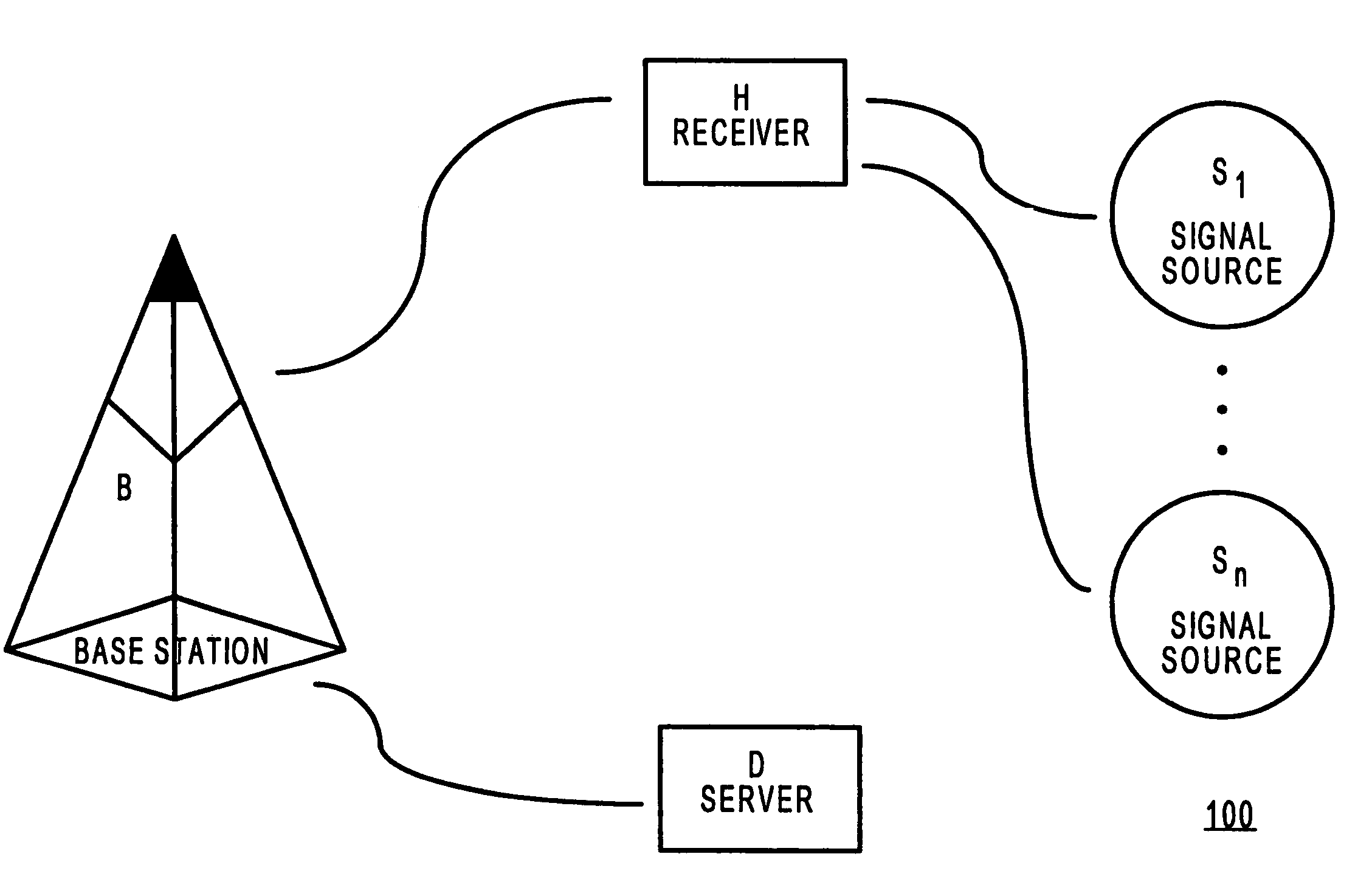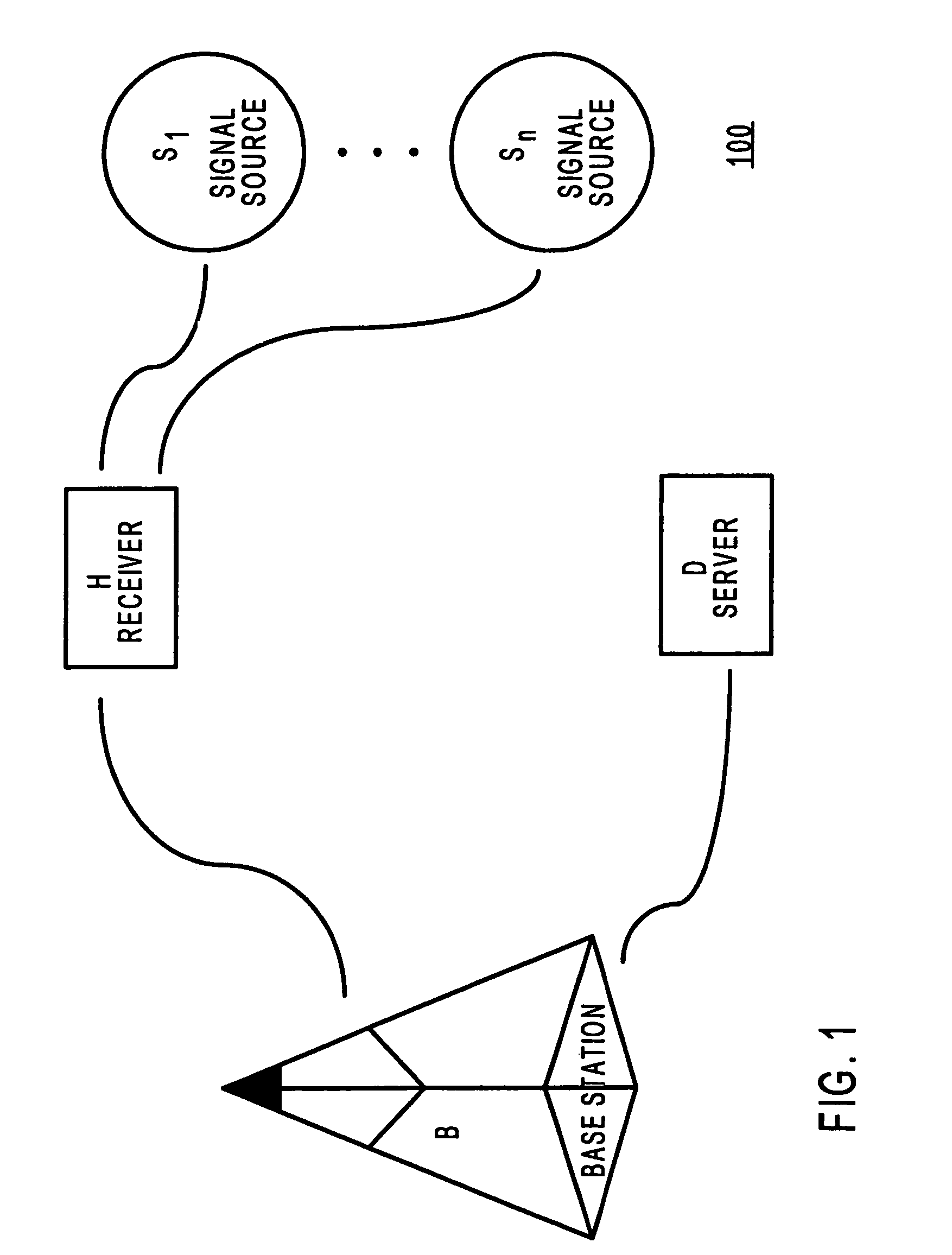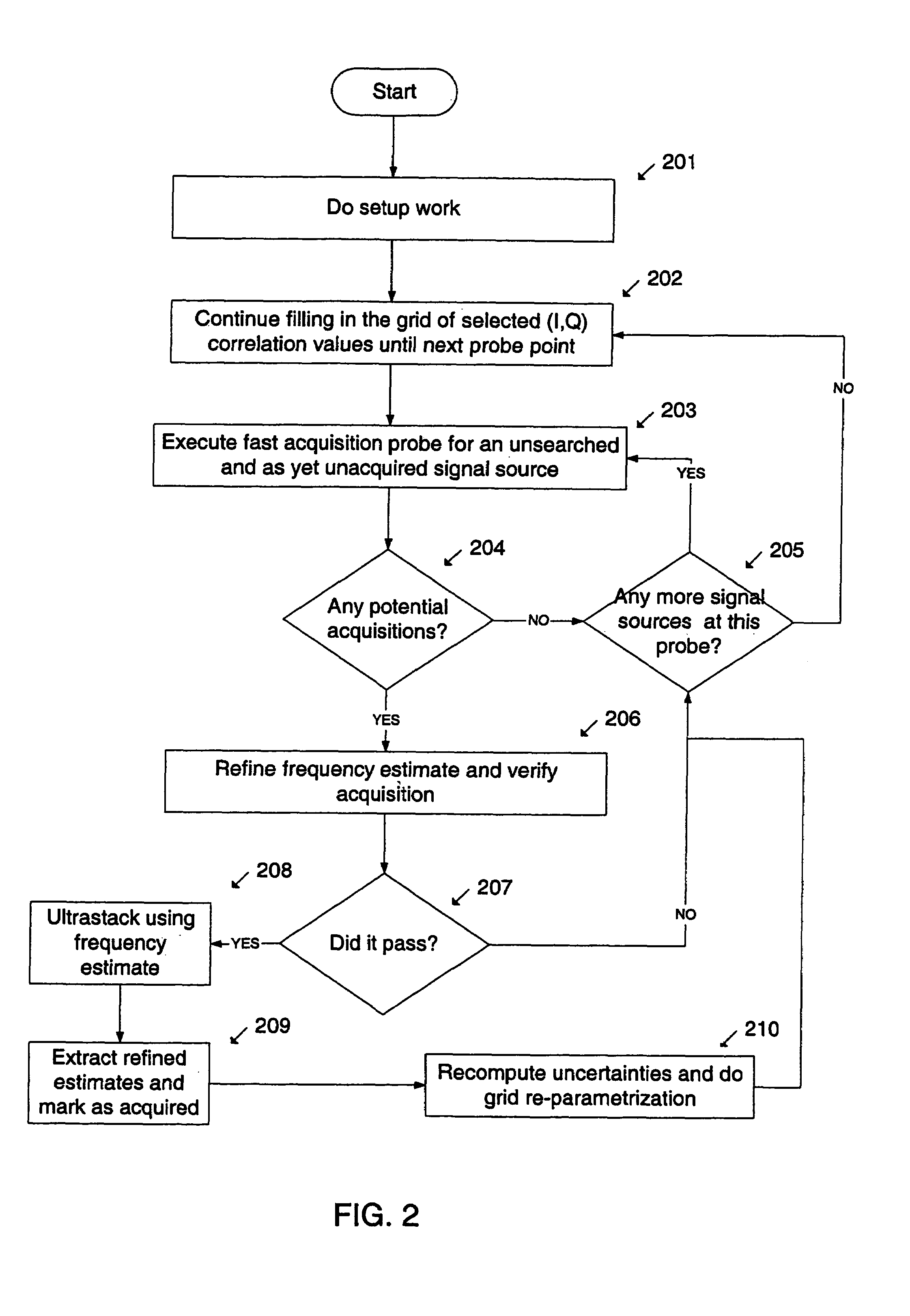System and method to estimate the location of a receiver
a receiver and location technology, applied in the field ofsignal processing, can solve the problems of inability to estimate the location of a receiver, inability to search for a long time, and inability to search in attenuated environments,
- Summary
- Abstract
- Description
- Claims
- Application Information
AI Technical Summary
Benefits of technology
Problems solved by technology
Method used
Image
Examples
Embodiment Construction
[0025]In the following description, for the purposes of explanation, numerous specific details are set forth in order to provide a thorough understanding of the present invention. It will be apparent, however, to one skilled in the art that the present invention may be practiced without these specific details. In other instances, well-known structures and devices are shown in block diagram form in order to avoid unnecessarily obscuring the present invention.
System Overview
[0026]FIG. 1 is a block diagram that illustrates a system overview for determining the location of a receiver. System 100 comprises a plurality of signal sources of which only signal sources S1 and Sn, are shown in FIG. 1. In addition, system 100 comprises a receiver H, a base station B, and a server D.
[0027]By way of example, only one base station and one server are shown in system 100. For example, in a practical system, there may be multiple base stations and multiple servers. In other embodiments of the inventi...
PUM
 Login to View More
Login to View More Abstract
Description
Claims
Application Information
 Login to View More
Login to View More - R&D
- Intellectual Property
- Life Sciences
- Materials
- Tech Scout
- Unparalleled Data Quality
- Higher Quality Content
- 60% Fewer Hallucinations
Browse by: Latest US Patents, China's latest patents, Technical Efficacy Thesaurus, Application Domain, Technology Topic, Popular Technical Reports.
© 2025 PatSnap. All rights reserved.Legal|Privacy policy|Modern Slavery Act Transparency Statement|Sitemap|About US| Contact US: help@patsnap.com



